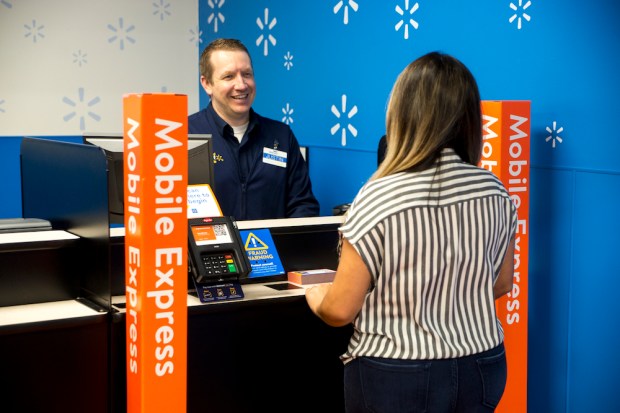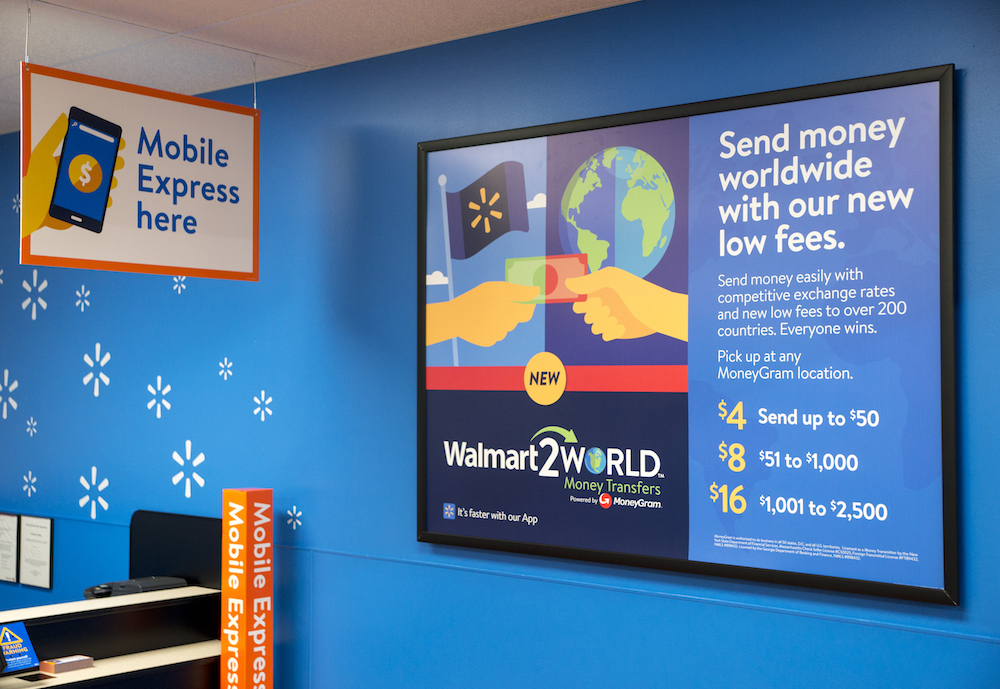Walmart Money Transfer Goes Global

Sending funds overseas is big business in the United States. According to the World Bank, in 2016, roughly $138 billion in remittances were sent from the U.S. to receivers worldwide.
On the strength of those numbers alone, Walmart’s interest in expanding its domestic P2P transfer service made perfect sense: It’s an enormous market – and a service that many of its current customers also use with other providers.
But according to Walmart Financial Services VP, Kirsty Ward, Walmart had another reason in mind as it was designing the Walmart2World international remittance service with MoneyGram that launched today: bringing transparency and certainty to a solution that she says has neither right now.
Sending funds around the world, Ward said, is far from a standardized service, and that lack of standardization creates uncertainty. Uncertainty over how much it will cost to send those funds. Uncertainty over when the money will be available. And uncertainty over how much will actually land in the receivers’ hands, after fees and currency conversions.
“It’s a little-known fact about [international money] transfers,” Ward told Karen Webster in a conversation before the Walmart2World launch, “that what it costs to send money from one person to another varies based on where a sender lives and where the money is being sent.”
Those differences, she noted, can be quite dramatic.
A person living in Dallas who might wish to send $600 to a relative in Thailand can expect to pay $60 to make the transfer using one of Walmart’s competitors, Ward said. Someone living in Houston – the same state of Texas – sending the same amount of money to the same country will pay only $16.
The inexplicable difference, down to the zip code level in some cases, drove Ward and her team to find a more predictable and transparent solution for global money transfers.
And they looked no further than their domestic P2P service, Walmart2Walmart, as the template for the Walmart2World solution. The international money transfer solution charges one of three low-cost flat fees to send money from anyone, to anyone in 200 countries.
From Domestic to Global P2P
Ward told Webster that the variabilities in domestic money transfer pricing were first seen when launching their domestic service in 2014. People living in cities, for example, were routinely charged more for transfers than consumers living in more suburban and rural markets.
It’s what inspired the Walmart2Walmart domestic P2P program, a service that lets anyone send money from any Walmart-branded channel – a Walmart store, from Walmart.com or via the mobile app – to someone else who could visit any Walmart store and get their funds within 10 minutes. All for one flat fee based on the amount sent.
Consumers sending up to $60 pay a $4 fee, those sending between $60 and $1,000 pay $8 and those sending between $1,000 and $2,500 are charged $16.
When looking at the international remittances market, Ward said the fee inconsistencies were more glaring, and had more of an impact on the consumers sending money abroad to help their families pay bills or to aid in an emergency. In both situations, the money being sent is needed immediately, and senders could ill afford to see a big chunk eaten up by fees.
Walmart2World, Ward explained, works exactly the same way – with one twist.
The fee structure remains identical regardless of where the sender or receiver lives.
Receivers can get their money within 10 minutes of it being sent.
And those receivers can now pick up that money at any one of MoneyGram’s 300,000 global agent locations.
 “[Walmart2World] demonstrates our shared commitment to ensuring our customers receive the financial services they depend on at an outstanding value,” said MoneyGram CEO Alex Holmes.
“[Walmart2World] demonstrates our shared commitment to ensuring our customers receive the financial services they depend on at an outstanding value,” said MoneyGram CEO Alex Holmes.
Ward said that not only will customers have full transparency about pricing, but they will be able to get their money at a place that is most convenient for them.
“Walmart2World is accessible,” Ward noted, “and will be available in Walmart’s 4,700 stores, beginning on April 18, on Walmart.com and in our mobile app. A customer can do their research on the FX rates online – they can then set up their entire transfer, come into any Walmart location and complete their entire transaction in seconds.”
Walmart2Walmart Writ Large
Walmart2Walmart’s standardized pricing, Ward noted, has had a major impact on the financial lives of the consumers they serve. Walmart estimates that they have already saved users some $700 million in fees since its 2014 launch.
Basic money services are crucial to how people live their lives, Ward said. Both Walmart2Walmart and Walmart2World bring convenience, consistency and standardized fees to that service instead of making people pay a premium for it.
But saving money, she said, is only half the battle. Walmart’s operating position is that “time is the new currency.” That means when Walmart is designing financial services products, the solutions must make it easier and faster for customers to manage their financial lives. And for those living paycheck-to-paycheck and remittance-to-remittance, time takes on an even more critical importance.
“Our goal is to focus on areas where the time and money savings is meaningful for our consumers,” Ward emphasized. “We also recognize that in some cases, saving time and saving money are equally important. When we can provide great prices and speedy delivery, then we are really living up to our best capacity.”
